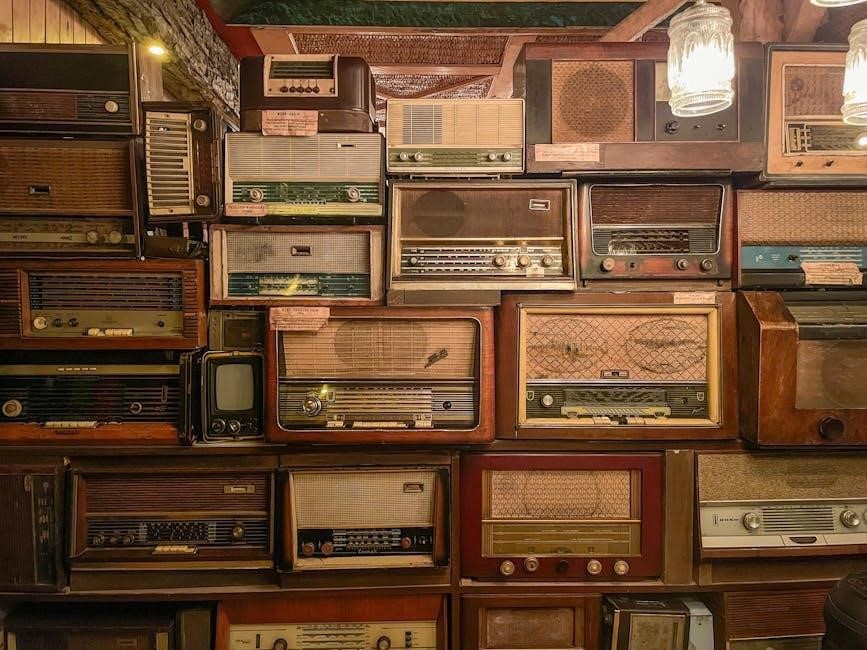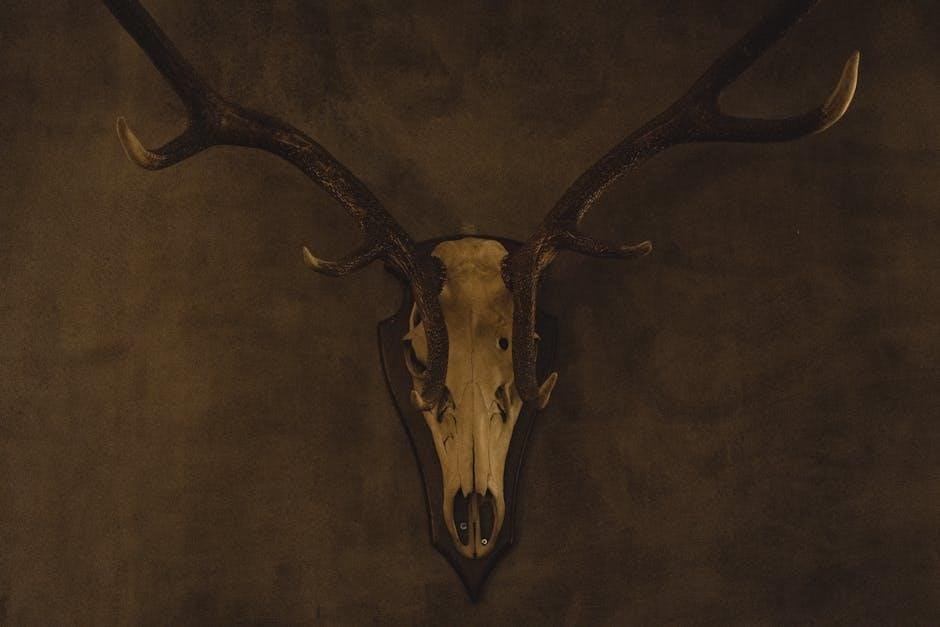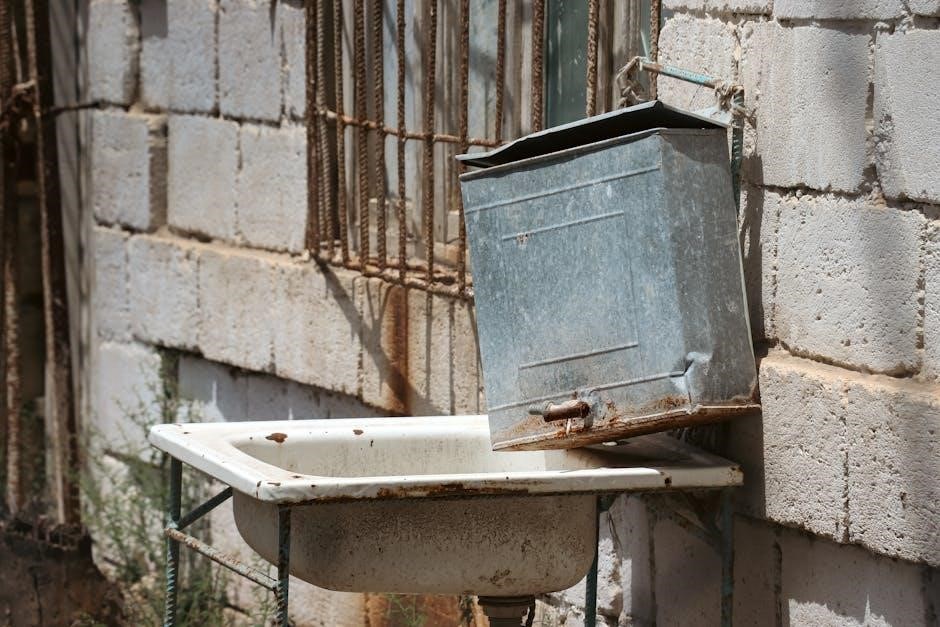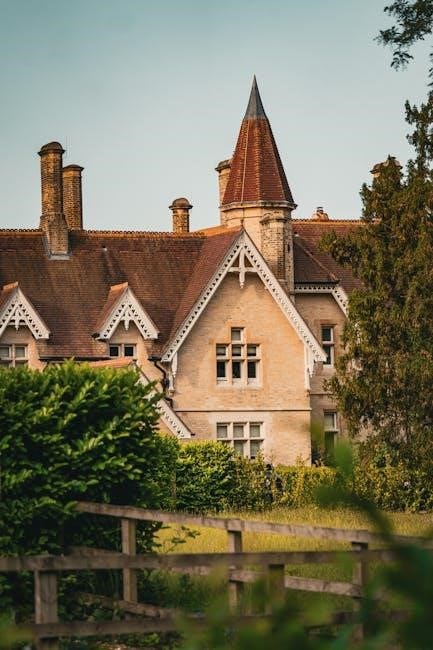the antique hunters guide
Embark on the thrilling adventure of antique hunting, where every discovery is a journey through time. Uncover hidden treasures, embrace the allure of the past, and transform spaces with unique finds in this captivating hobby.
Understanding the Appeal of Antique Collecting
Antique collecting captivates enthusiasts with its blend of history, craftsmanship, and personal storytelling. Each piece offers a window into the past, evoking emotions and connections to bygone eras. The thrill of the hunt, the satisfaction of discovering hidden gems, and the joy of preserving heritage make it a rewarding hobby. Collectors often cherish antiques for their unique character, superior craftsmanship, and the stories they hold. Whether driven by nostalgia, investment, or aesthetic appeal, antique collecting is a timeless passion that unites history lovers and treasure seekers alike.
The Difference Between Vintage and Antique Items
Vintage and antique items are often confused, but distinct differences set them apart. Antiques are typically items over 100 years old, carrying historical significance and craftsmanship. Vintage items, while old, usually date from the mid-20th century or earlier, often reflecting a bygone era’s style. Antiques are prized for their rarity and historical value, while vintage pieces are cherished for their nostalgic charm and aesthetic appeal. Both categories captivate collectors, offering unique connections to the past, but their age and cultural significance define their classifications.

Where to Find Antiques
Discover the thrill of antique hunting across flea markets, estate sales, thrift stores, and specialty shops, where hidden gems and unique treasures await the keen-eyed collector.
The Best Thrift Stores for Antique Hunting
Thrift stores are treasure troves for antique hunters, offering affordable access to hidden gems. From vintage clothing to mid-century furniture, these stores provide endless opportunities to uncover unique finds. Frequent visits increase chances of discovering rare items, as inventory constantly changes. Inspect items carefully for signs of authenticity and craftsmanship, and don’t hesitate to negotiate prices. Thrift stores cater to all budgets, making them an ideal starting point for both seasoned collectors and newcomers to the world of antique hunting.
Flea Markets and Estate Sales: Hidden Gems
Flea markets and estate sales are goldmines for antique hunters, offering a wide array of unique and often overlooked treasures. These venues provide a dynamic environment where rare finds can be uncovered at competitive prices. Estate sales, in particular, often feature high-quality antiques from private collections. Arrive early to flea markets for the best selection, and inspect items thoroughly for authenticity. These events are not just about shopping—they’re a social adventure where bargaining and storytelling are part of the charm, making every discovery a memorable experience.
Antique Shops and Specialty Stores
Antique shops and specialty stores are treasure troves for discerning collectors, offering meticulously curated selections of rare and authentic items. These establishments often feature expertly restored pieces, ensuring quality and historical accuracy. Knowledgeable dealers provide valuable insights, helping enthusiasts make informed purchases. From vintage furniture to rare artifacts, these stores cater to diverse tastes and budgets. Specialty stores may focus on specific eras or categories, such as mid-century modern or antique jewelry. Visiting these shops is not just about shopping—it’s an immersive experience that connects you with the past. Explore and discover hidden gems in these dedicated spaces.
How to Identify Genuine Antiques
Examine the item’s condition, craftsmanship, and historical context to determine authenticity. Look for natural aging signs, quality materials, and maker’s marks to spot genuine antiques.
Signs of Aging and Wear on Antique Items
Antique items often display natural aging signs, such as patina, scratches, or fading, which reflect their history. Genuine wear patterns, like uneven polish or wood cracks, indicate authenticity. Avoid items with overly uniform or artificial aging, as these may be reproductions. Examine hardware, joints, and surfaces for consistent wear. Smell and texture can also reveal age, as old materials develop distinct characteristics. Understanding these signs helps distinguish true antiques from modern replicas, ensuring your finds are meaningful and valuable.
Understanding Craftsmanship and Materials
Authentic antiques often showcase exceptional craftsmanship, reflecting the skill of their creators. Look for items made from high-quality, durable materials like solid hardwoods, brass, or porcelain. Traditional techniques, such as hand-carved details or intricate joinery, are hallmarks of genuine antiques. Avoid pieces with modern materials like particleboard or plastic, as these are unlikely to be vintage. The attention to detail and quality of construction are key indicators of an item’s age and value, distinguishing true antiques from mass-produced replicas.
Researching Historical Significance
Unraveling the historical significance of antiques is key to understanding their value. Investigate the era, cultural context, and historical events tied to an item. Researching provenance and ownership history can reveal ties to notable figures or movements. Understanding the social and artistic trends of the time enhances appreciation and authenticity. This deep dive into history not only verifies age but also highlights the item’s story, making it more than just an object—it becomes a window into the past, elevating its significance for collectors and enthusiasts alike.
Negotiation and Bargaining Strategies
Negotiation is an art in antique hunting. Start with a lower offer, politely haggle, and highlight flaws. Know your budget and when to walk away gracefully.
How to Negotiate Prices at Antique Stores
Negotiating prices at antique stores requires finesse and research. Start by offering 20-30% below the asking price, citing any flaws or needed repairs. Know the item’s market value beforehand to make a credible offer. Be polite and respectful, building rapport with the seller. If the seller hesitates, express willingness to walk away to encourage a better deal. Remember, negotiation is a conversation, not a confrontation. Patience and persistence often lead to a fair price for both parties.
Budget-Friendly Strategies for Antique Hunters
Antique hunting doesn’t have to break the bank! Start by exploring thrift stores, flea markets, and estate sales for hidden gems at lower prices. Always inspect items for flaws or needed repairs to negotiate better deals. Consider purchasing during off-peak seasons or in less popular locations. Buy in bulk or offer to bundle items for discounts. Additionally, keep an eye out for seasonal sales or promotions. Remember, patience and persistence can lead to incredible finds without overspending. Happy hunting!
Examining and Authenticating Antiques
Examine antiques meticulously for signs of aging, craftsmanship, and historical context; Verify authenticity by researching marks, signatures, and materials. Use magnifying tools and expert resources to ensure accuracy.
Inspecting Items for Authenticity
Inspecting items for authenticity requires a meticulous eye for detail. Start by examining the condition, looking for natural wear patterns that align with the item’s age. Use magnifying tools to check for craftsmanship, such as hand-carved details or period-specific materials. Verify the presence of patina, which indicates aging, and avoid pieces with overly restored or mismatched parts. Research historical manufacturing techniques and compare them to the item in question. Additionally, check for any hidden markings or signatures that confirm its origin. Always cross-reference findings with reliable sources or experts to ensure accuracy.
Recognizing Marks and Signatures
Recognizing marks and signatures is crucial for authenticating antiques. Maker’s stamps, artist signatures, and manufacturing marks often indicate origin and age. Inspect these details under magnification to avoid reproductions. Research historical databases or reference books to match marks with known makers. Consistency in style and material further validates authenticity. Look for patina on marks, as newer additions may lack aging. Experts or appraisers can verify unclear signatures, ensuring your find is genuine and valuable. This step is essential for distinguishing true antiques from modern replicas or forgeries.

Restoring and Maintaining Antiques
Restoring antiques requires gentle cleaning and selective refurbishing to preserve their historical charm. Regular maintenance, like polishing and proper storage, ensures their longevity and maintains their value.
DIY Restoration Tips for Beginners
Start by cleaning antiques gently with mild soap and soft cloths to avoid damage; Use natural polishes like beeswax for wood surfaces. Avoid harsh chemicals or abrasive materials. For metalwork, lightly sand rusted areas and apply protective coatings. Reattach loose joints with wood glue or appropriate adhesives. Replace missing hardware with period-appropriate pieces. Always test restoration techniques on inconspicuous areas first. Research the item’s era to maintain authenticity. Patience and care are key to preserving an antique’s value and historical charm. Know when to seek professional help for complex repairs.
When to Seek Professional Restoration Help
Seek professional restoration help for complex repairs, such as structural damage or intricate carvings. If an item is fragile, like porcelain or glass, trust experts to handle it. Use specialized tools or techniques? Professionals are essential. Preserve an antique’s value by avoiding DIY mistakes. For high-value or historically significant pieces, consult a restoration expert. They ensure authenticity and stability. Don’t risk irreversible damage—know when to hand over delicate tasks to skilled craftsmen. This ensures your treasured finds remain intact for generations.
Selling Antiques for Profit
Turn your finds into profit by identifying their true value, researching market trends, and choosing the right platform to sell. Timing and presentation are key.
How to Research and Price Your Finds
Accurately pricing antiques requires thorough research. Start by examining maker’s marks, historical significance, and condition. Consult antique guides, auction records, and expert opinions. Understand market demand by comparing similar items online and in specialty stores. Use valuation tools and apps to estimate worth. Consider getting items appraised for rare or high-value pieces. Document everything, including provenance, to support your pricing. Presentation and context can significantly impact perceived value, helping you maximize profit when selling.
Where to Sell Antiques for Maximum Profit
To maximize profit, sell antiques through high-end auction houses, online marketplaces, or specialty antique dealers. Online platforms like eBay and Etsy reach global buyers, while local antique malls attract niche collectors. Estate sales and flea markets can also yield surprising returns. Consider consigning rare items to reputable auction houses for higher bids. Present items in excellent condition with clear provenance to attract serious buyers. Research competitive pricing and choose platforms that align with your item’s value and audience for the best financial outcome.

Case Studies and Success Stories
Famous antique hunters like Freya Lockwood have turned treasure-hunting into thrilling adventures, solving mysteries and uncovering rare artifacts. Their journeys inspire collectors to pursue history with passion and dedication.
Famous Antique Hunters and Their Finds
Meet Freya Lockwood, a former antique hunter turned investigator, whose thrilling adventures uncover stolen artifacts and solve mysteries in the high-stakes world of antiques. Her journey, highlighted in The Antique Hunter’s Guide to Murder, showcases her expertise in tracking rare treasures. Other notable hunters have made headlines with remarkable discoveries, such as the 1663 Olearius book revealing historical Tartary cities. These stories inspire collectors and highlight the excitement of the hunt, proving that antique hunting is as much about history as it is about adventure and intrigue.
Lessons Learned from Seasoned Collectors
Seasoned collectors emphasize patience, research, and a keen eye for detail. They advise avoiding impulse buys and focusing on items with historical significance or exceptional craftsmanship. Understanding materials, aging signs, and provenance is crucial. Ethical practices, such as avoiding stolen or looted artifacts, are stressed. Starting small and building a meaningful collection over time is recommended. Budgeting and negotiating effectively are also key strategies. Ultimately, their experiences highlight the importance of passion, knowledge, and dedication in the rewarding world of antique hunting.

The Future of Antique Hunting
Antique hunting evolves with technology and sustainability, blending tradition with innovation. Digital tools enhance discovery, while ethical practices ensure responsible collecting, attracting both newcomers and seasoned enthusiasts alike.
Modern Tools and Technology in Antique Hunting
Modern technology has revolutionized antique hunting, offering innovative tools to enhance the pursuit. Mobile apps now aid in identifying and authenticating antiques, while AI-powered platforms analyze historical data to detect forgeries. Digital marketplaces expand access to rare items, connecting hunters globally. Additionally, 3D scanning and printing enable precise reproductions for restoration without damaging originals. These advancements not only streamline the process but also make antique hunting more accessible and sustainable, appealing to a new generation of collectors and enthusiasts.
Sustainability and Ethical Considerations
Sustainability and ethics play a crucial role in modern antique hunting. Prioritizing eco-friendly practices, such as buying second-hand and reducing waste, aligns with environmental values. Ethical sourcing ensures items are acquired legally and responsibly, avoiding stolen or looted artifacts. Additionally, supporting local sellers and fair trade practices promotes community well-being. By embracing these principles, collectors preserve history thoughtfully while contributing to a sustainable future. Ethical antique hunting not only honors the past but also fosters a responsible approach to cultural heritage and environmental stewardship.
Antique hunting is a rewarding journey that merges history, adventure, and personal style. By mastering tips, understanding craftsmanship, and embracing ethical practices, hunters can uncover treasures while preserving cultural heritage. Whether for passion or profit, this hobby offers endless possibilities. As technology evolves, new tools emerge, making it easier to discover and authenticate antiques. With dedication and knowledge, every hunt becomes a story of discovery, connecting us to the past while shaping a sustainable future for collectors and enthusiasts alike.
